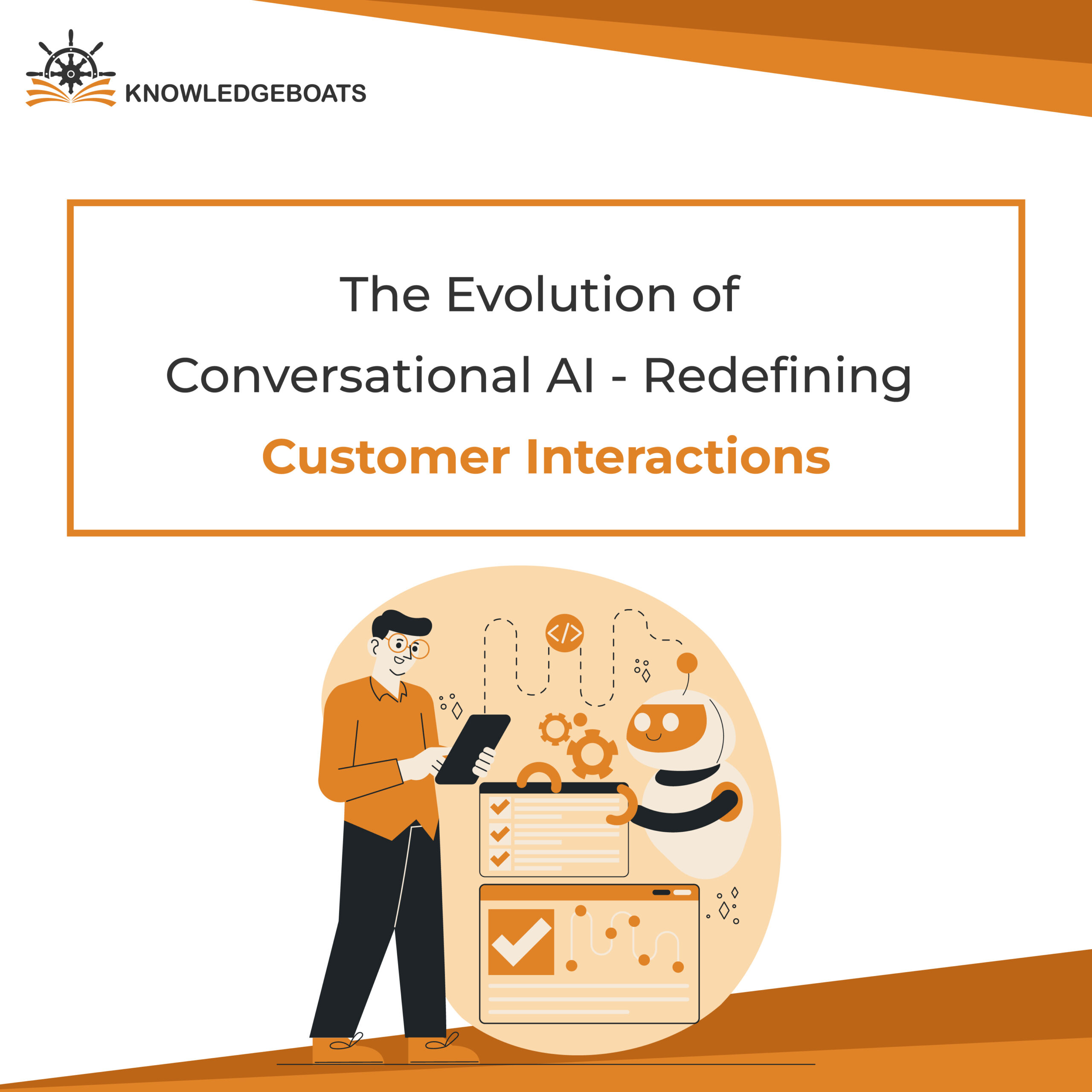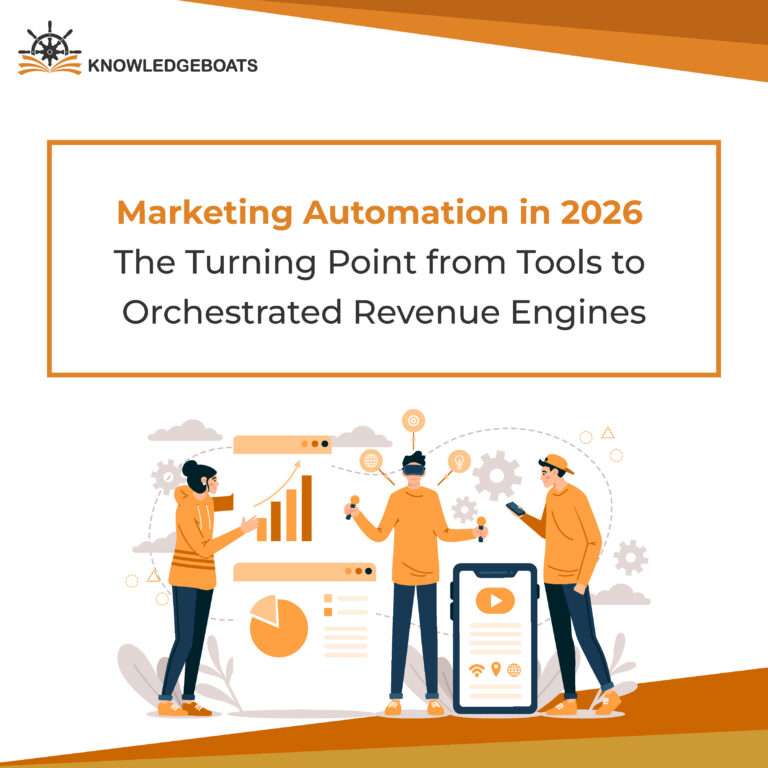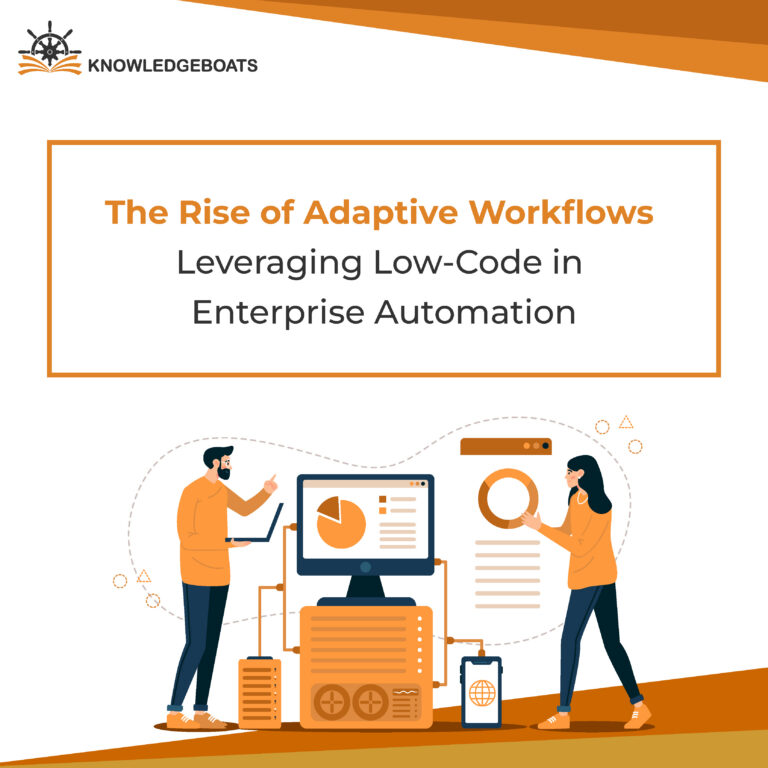
The B2B realm is growing rapidly, adopting new trends and technology. The emergence of this advanced technology has changed the way businesses interact with customers. From simple chatbots to advanced conversational AI, customer service has evolved in many ways. This change in B2B space was more than just improving efficiency and responsiveness. It is about delivering more personalized, insightful, and intelligent customer interactions. As AI and ML enhanced customer experience, it has experienced a significant shift.
Conversational AI and voice search have improved the B2B world customer experience far beyond your expectations. The ability of AI systems to analyze big datasets, interpret voice commands, and provide real-time responses has made the way easy for hyper-personalization and efficient customer interactions.
What is Conversational AI?
Conversational AI includes leveraging technologies such as virtual agents, chatbots, voice assistants, etc. to converse with customers. These technologies analyze a large volume of data, natural learning processing, and machine learning to assist customers with their queries in a human imitation. Conversational AI merges machine learning (ML) with Natural Language Processing (NLP). This process flows into a feedback loop with ML processes to consistently enhance their AI algorithms.
The stages of conversational AI
The conversational AI has several stages that include:
I. The Early Stage: Automation and Pre-Programmed Responses
The journey of AI in customer interaction began with basic automation, majorly in the form of virtual agents and chatbots. These conversational AI can reply to simple and predefined questions as these systems are rule-based. Additionally, it leverages keywords to pre-program the responses. These early systems were cost-effective and freed human agents from repetitive tasks. However, it could not understand complex queries, grasp context, or engage the customer.
II. Natural Language Processing (NLP): Bridging the Communication Gap
The adoption of NLP in B2B predicted a major leap forward in the development of customer interactions. NLP-enabled systems could grasp a better understanding of the intent behind customer queries instead of matching keywords. Natural Language Processing could break complex sentences and respond with relevant answers along with enabling:
- Interpret idioms, slang, and context.
- Understand different sentence structures and misspelled words.
- Offer human-like and more conversational responses to the customers.
Despite being an advanced technology, it struggled to adapt emotional cues in conversations and couldn’t understand highly nuanced language.
III. Machine Learning and Personalization
Machine learning transformed conversational AI from a static system to an advanced learning one. It trained AI models on big datasets of previous customer interactions, ML empowered systems to enhance every conversation. These models not only respond to customer queries but also learn, adapt, and improve. Machine learning models introduced predictive analytics in customer interactions. This made a rapid shift towards personalized and predictive customer service streamlined and enhanced customer satisfaction leading to an increase in brand loyalty.
IV. Conversational AI in Intelligent Interactions
Conversational AI delivers the most advanced stage in the evolution of AI in customer service. The previous bots could only handle transactional inquiries but, conversational AI can grasp a deeper understanding of the context, emotional cues, and intent, and can imitate human intelligence. This conversational AI is built by combining machine learning, deep learning, and Natural Language Processing to offer engaging interaction to the customers.
V. Role of AI in Crafting Personalized Experiences
In today’s advanced customer-centric realm, the role of AI is beyond just enhancing operational efficiency. The customer-centric world is focused on developing more personalized and emotionally resonant experiences for its customers. Advanced AI tools analyze vast amounts of data from previous purchase customer history, interactions, preferences, and behavioral patterns. This huge data analysis offers personalized solutions tailored to every customer. By infusing emotional intelligence, AI will become a powerful tool for conversational AI trends in 2025 and will assist in developing long-term deeper relationships.
How Conversational AI Is Transforming Customer Interactions
Over the past few years, conversational AI has evolved into sophisticated systems that can predict and respond to complex customer inquiries due to NLP and ML. Today’s advanced conversational AI can understand intent, recognize nuances in human speech, and adapt in real-time. It also represents the capability of AI to interact with customers on the human level, which was previously impossible.
With the adoption of conversational AI, voice search is also experiencing rapid adoption owing to the rising convenience of voice-activated assistants such as Google Assistant, Alexa, and Siri. In the B2B realm, where efficiency and time are priorities, voice search offers an easy, faster, and hands-free alternative to traditional typing. By eliminating the need for physical interactions, voice search is creating a seamless new way for customers to interact with brands.
Future Trends in AI-driven Customer Service
The future of AI in customer service will focus on more personalized, quicker, and human-like interactions. The following are predicted to be future trends in AI-driven customer service:
- Chatbots
Chatbots and virtual customer assistants are crucial and common AI tools in customer service. This handles a wide range of customer queries and offers instant response. Chatbots and virtual customer assistants operate 24/7 and ensure that customers get an instant response at any given time.
- Sentiment Analysis & Predictive Analytics
Predictive analytics assists businesses predict customer needs before they arise. The use of predictive analytics is expected to prevail in the B2B sector. Sentiment analysis is another AI-powered customer support tool that engages customers. Its capability also assists in recognizing customer sentiments and tailoring interactions to enhance customer experience.
- Generative AI
Generative AI is ahead of traditional AI by generating new content based on existing data. This includes creating personalized recommendations, generating responses, and producing high-quality content that aligns with customer interests. Generative AI can create instant mail responses and recommend products. It can also initiate human-like conversations, that can make customer interaction more engaging and dynamic.
The Future of AI in Customer Service: What’s Next?
Staring at the future of AI in customer service, it is not only about continuous improvements in language understanding or response times. The next role of AI is to become a frontier in emotional AI, where systems can recognize and understand human emotions, creating more meaningful and deeper interactions. Owing to NLP (Natural Language Processing) and ML (Machine learning), AI will become even more efficient in addressing real-time queries, breaking down language barriers, and refining voice-activated support technologies.
Conclusion
Businesses continue to push their boundaries and adopt advanced technologies. The future of conversational AI and voice search seems promising for customer experience. This blog delves into several stages of conversational AI and how it is predicted to transform customer interaction. It also emphasizes future trends of AI-driven customer service in the business world. Chatbots, predictive analytics, and generative AI are AI-driven customer service tools. Conversational AI is becoming a necessity for every B2B company. Customer service impacts on the overall business ROI and thus, businesses need to emphasize how they interact with customers. Additionally, addressing customer queries promptly ensures better customer service.



